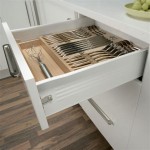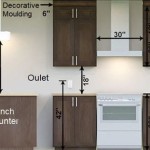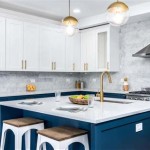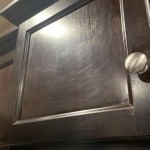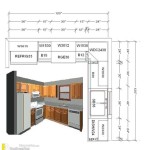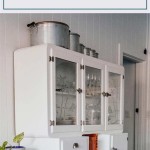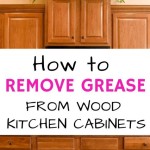Kitchen Cupboard Not Closing All The Way: Troubleshooting and Solutions
A kitchen cupboard that refuses to close completely is a common household annoyance that can stem from various underlying issues. Beyond the immediate frustration, a partially open cupboard can create a visual clutter, invite pests, and, in some cases, pose a safety hazard, especially if located in high-traffic areas. Addressing this problem proactively can prevent further damage and ensure the longevity and functionality of kitchen cabinetry.
Identifying the root cause is the initial step towards resolving the issue. A systematic approach, involving careful observation and testing, is crucial to pinpoint the exact reason for the malfunctioning cupboard door. This article will delve into the potential causes of why a kitchen cupboard might not be closing properly and offer practical solutions to rectify the problem.
Identifying Common Causes
Several factors can contribute to a cupboard door not closing flush with the cabinet frame. These factors often fall into distinct categories, including hardware malfunctions, structural misalignments, obstructions within the cabinet, and environmental influences.
Hardware malfunctions are frequently the primary suspects. Hinges, the pivotal components that allow the door to swing, can become loose, bent, or corroded over time. Loose screws securing the hinges to the door or cabinet frame allow the door to sag, preventing it from aligning properly with the catch or magnetic closure. Corrosion, especially in humid environments, can stiffen hinge movement, hindering smooth operation. Additionally, the magnetic catch or the latch mechanism designed to keep the door closed can weaken or break, rendering it incapable of securely holding the door in place. Furthermore, the door handle itself might be interfering if it is too large or if it is positioned in such a way that it comes into contact with the adjacent cabinet or wall before the door closes fully.
Structural misalignments can also be a significant contributor. The cabinet frame itself might be warped or out of square, either due to initial installation errors or gradual settling of the house foundation. This warping forces the door to conform to the skewed frame, making it difficult to achieve a complete closure. Similarly, the door itself might be warped, particularly if it is made of wood or a wood composite material that is susceptible to moisture absorption. An uneven floor can also contribute to the problem by affecting the overall stability of the cabinet base and causing subtle shifts in the frame alignment. Even minor variations in the floor level can translate into noticeable discrepancies in door closure.
Obstructions within the cabinet often get overlooked. Overcrowding or improperly stored items inside the cupboard can press against the back of the door, preventing it from fully closing. Items extending beyond the shelf edges or objects obstructing the door's interior surface will inevitably hinder the closing action. Similarly, misplaced or loose shelf supports can interfere with the door's movement. Before investigating any other potential causes, it is imperative to ensure that the cabinet's interior is free of any obstructions that might be contributing to the problem.
Environmental influences, particularly changes in humidity levels, can significantly impact the behavior of wooden cabinets and doors. Wood is a hygroscopic material, meaning it absorbs and releases moisture from the surrounding air. During periods of high humidity, wood expands, which can cause doors to swell and become difficult to close. Conversely, during dry periods, wood shrinks, potentially creating gaps and altering the door's alignment. Fluctuations in temperature can also contribute to warping and expansion, although the effects are typically less pronounced than those caused by humidity. These environmental factors are especially relevant in kitchens, where cooking activities often generate significant amounts of steam and humidity.
Troubleshooting and Diagnostic Steps
Once potential causes have been identified, a methodical troubleshooting process is essential to pinpoint the specific issue affecting the cupboard door. This process involves visual inspection, physical manipulation, and the use of basic tools to assess the condition of the hardware, frame, and door itself.
The initial step is a thorough visual inspection of the hinges. Examine each hinge closely for signs of damage, corrosion, or loose screws. Pay particular attention to the hinge pins, which are the small rods that hold the hinge leaves together. If a pin is bent or missing, it can significantly impair the hinge's function. Attempt to tighten any loose screws with a screwdriver. If the screws are stripped, meaning the holes are too wide for the screws to grip, consider using longer screws or inserting wood glue and toothpicks into the holes to provide a better anchor. Check the alignment of the hinge leaves; they should be parallel and flush with the door and cabinet frame surfaces. If one leaf is bent or misaligned, it can create friction and prevent the door from closing smoothly.
Next, evaluate the magnetic catch or latch mechanism. Ensure that the magnetic catch is securely attached to both the cabinet frame and the door. Test the strength of the magnetic attraction by manually pushing the door towards the catch. If the attraction is weak, the magnet might be worn out or improperly positioned. Consider replacing the magnetic catch with a new one. For latch mechanisms, check for any broken or bent parts. Ensure that the latch aligns properly with the strike plate on the cabinet frame. If the latch is misaligned, adjust the position of the strike plate or the latch itself to ensure a secure closure. Lubricating the latch mechanism with a silicone-based lubricant can also improve its operation.
Assess the cabinet frame for squareness and stability. Use a level to check the vertical and horizontal lines of the frame. If the frame is significantly out of square, it might be necessary to shim the cabinet base to restore its alignment. Inspect the cabinet for any signs of warping or damage. If the frame is severely warped, it might require professional repair or replacement. Gently push on the cabinet to check for any wobbling or instability. If the cabinet is unstable, tighten the mounting screws or consider adding additional support to the base.
Examine the door for warping or damage. Place the door on a flat surface to check for any unevenness or bowing. If the door is warped, it might be possible to straighten it using clamps and weights, although this is a complex procedure best left to experienced woodworkers. Inspect the door edges for any signs of swelling or water damage. If the door is significantly damaged, it might require replacement. Check the door's alignment with the cabinet frame. If the door is rubbing against the frame in certain areas, it might be necessary to sand down the edges of the door to create sufficient clearance.
Practical Solutions and Remedial Actions
Once the cause of the cupboard door problem has been identified through careful troubleshooting, implementing targeted solutions becomes crucial. Depending on the nature and severity of the issue, the solutions can range from simple hardware adjustments to more involved structural repairs.
For loose or misaligned hinges, tightening the screws is often the first line of defense. If the screws are stripped, using longer screws or filling the screw holes with wood glue and toothpicks can provide a more secure anchor. If a hinge is bent or corroded, replacing it entirely is generally the most effective solution. New hinges are relatively inexpensive and can be easily installed with basic tools. When replacing hinges, ensure that the new hinges are the same size and type as the old ones to ensure a proper fit. Furthermore, consider using self-closing hinges, which incorporate a spring mechanism that automatically pulls the door closed, providing a more secure and reliable closure. This is particularly useful for cupboards containing breakable items.
Addressing a weak or malfunctioning magnetic catch typically involves replacing the existing catch with a new one. Magnetic catches are available in a variety of sizes and strengths, so choose one that is appropriate for the size and weight of the cupboard door. When installing the new catch, ensure that it is properly aligned with the strike plate on the door. If the strike plate is damaged or missing, replace it as well. For latch mechanisms, repairing or replacing broken parts is essential. If the latch is simply misaligned, adjusting the position of the strike plate can often resolve the issue. Lubricating the latch mechanism with a silicone-based lubricant can also improve its performance and prevent future sticking.
Correcting cabinet frame misalignment often requires shimming the cabinet base. Shims are thin, tapered pieces of wood or plastic that are inserted beneath the cabinet to level it. Use a level to determine where shims are needed. Gradually add shims until the cabinet is level and the door closes properly. Once the cabinet is level, secure the shims in place with construction adhesive or screws. If the frame is significantly warped or damaged, professional repair or replacement might be necessary. A carpenter can assess the extent of the damage and recommend the most appropriate course of action. In some cases, reinforcing the frame with additional supports can help to stabilize it and prevent further warping. The same principles apply if the door is warped. Minor warping might be corrected using clamps and weights, but significant warping often necessitates door replacement.
In situations where environmental factors are contributing to the problem, managing humidity levels within the kitchen can be beneficial. Using a dehumidifier during periods of high humidity can help to prevent wood from swelling. Conversely, using a humidifier during dry periods can help to prevent wood from shrinking. Ensure proper ventilation in the kitchen by using the range hood while cooking and opening windows to allow air circulation. Applying a sealant or varnish to the cabinet doors and frame can also help to protect the wood from moisture damage. Regular cleaning of the kitchen can also help to prevent the buildup of moisture and grease, which can contribute to warping and corrosion.

How To Adjust Kitchen Cabinet Doors That Won T Close

Repair How Would You Fix This Cabinet Not Opening All The Way Home Improvement Stack Exchange

How To Adjust Kitchen Cabinet Doors That Won T Close

Repair How Would You Fix This Cabinet Not Opening All The Way Home Improvement Stack Exchange

How To Adjust Kitchen Cabinet Doors That Won T Close

Do It Yourself How To Adjust Cabinet Door Hinges Step By

How To Adjust Soft Close Hinges 7 Steps With Pictures Wikihow
Trouble Upgrading Cabinet Hinges To Soft Close Door Not Flush And Can T Remove Dowels Diy Home Improvement Forum

How To Adjust 3 Hinges Align Cabinet Doors

Extending Kitchen Cabinets Up To The Ceiling Thrifty Decor Diy And Organizing
Related Posts

